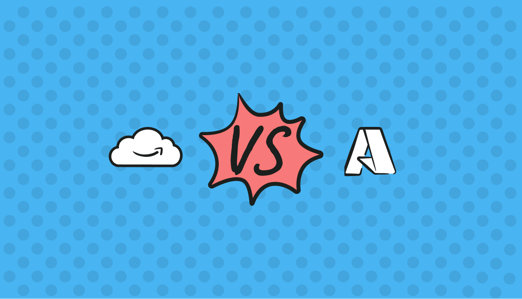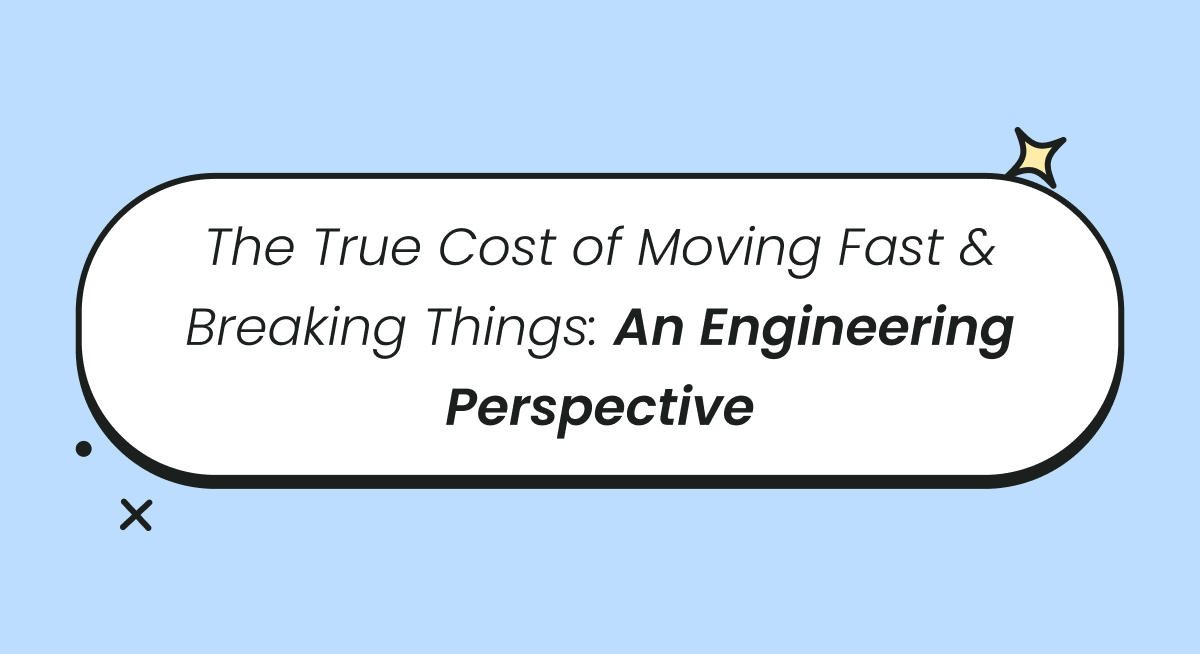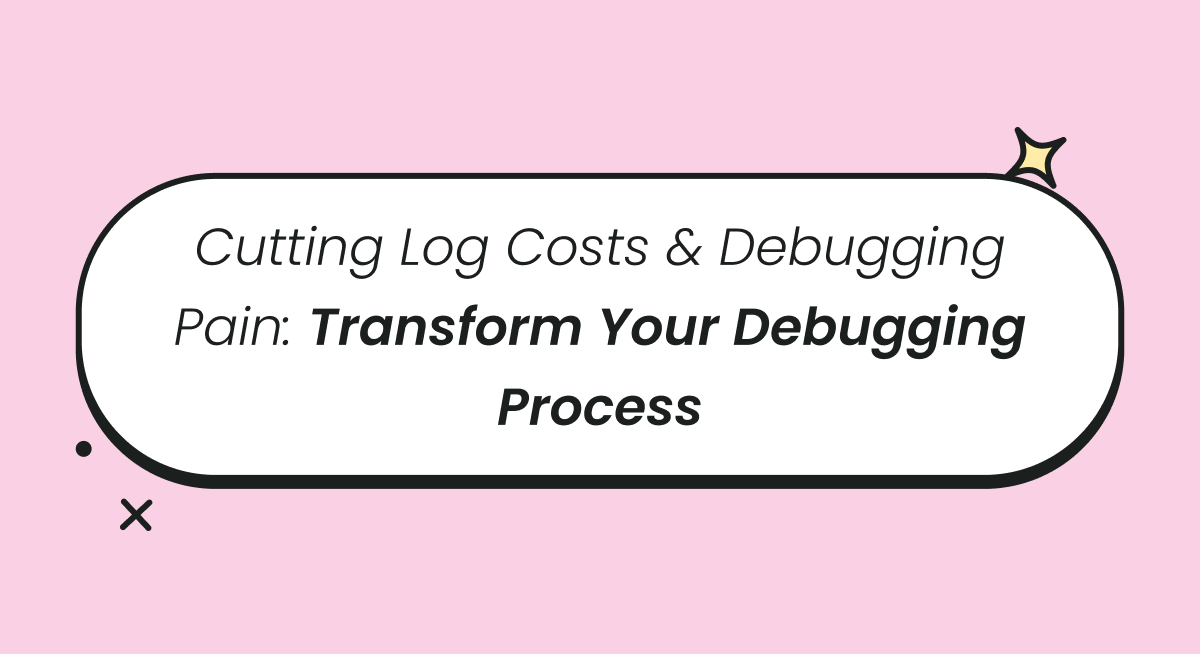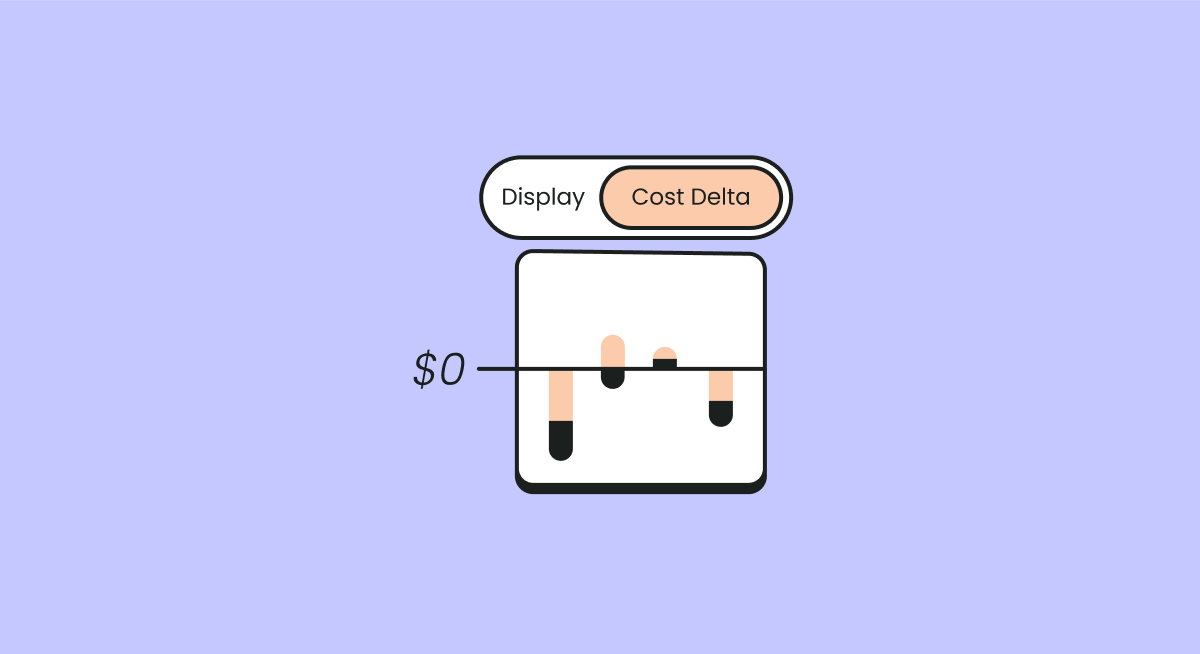Azure vs AWS Pricing Comparison: What to Consider When Choosing Between AWS vs Azure

In the intricate landscape of cloud computing, Windows Azure and AWS have emerged as dominant choices for businesses worldwide. Among the many factors to consider, pricing remains a key concern, directly influencing an organization's budget and long-term strategy. This breakdown aims to bring clarity to the Windows Azure vs. AWS pricing comparison, exploring their pricing models, key cost factors, and how FinOps tools can help businesses optimize their cloud spend.
In this article, we'll dive into the primary Windows Azure vs. AWS pricing comparison, particularly emphasizing their pricing models. Not stopping there, we'll equip you with valuable insights on when to opt for which provider, accompanied by fundamental strategies for optimizing your cloud spending. Whether you're a startup or a seasoned enterprise, this guide aims to provide clarity in your cloud journey.
Check out two related articles:
Azure vs AWS Pricing: Key Factors that Influence Cloud Pricing
Beyond the extensive range of features and services, these platforms offer, cost-effectiveness often emerges as a decisive factor when selecting a cloud service. By analyzing the Azure pricing vs. AWS, businesses can gain valuable insights into which platform aligns best with their financial objectives and operational needs.
Comparing Basic Pricing Models
Amazon Web Services: AWS operates on a pay-as-you-go model, charging users based on their actual resource consumption. This flexible approach allows businesses to adjust their resources according to fluctuating demands. AWS's comprehensive pricing calculator offers a robust tool for users, allowing comprehensive cost estimations across diverse services and configurations.
Microsoft Azure: Azure employs a similar consumption-based model. Distinctively, Azure offers Reserved Instances — a pricing structure permitting users to commit to specified virtual machine configurations over one or three-year durations. Such commitments can yield notable cost efficiencies for businesses maintaining steady workloads. Azure further equips users with its pricing calculator to facilitate cost estimations.
Unraveling Compute Costs
AWS: Amazon's Elastic Compute Cloud (EC2) service offers a spectrum of instance types tailored to various performance requirements. Ranging from General Purpose to Memory Optimized instances, the pricing intricacies encompass factors such as instance type, operating system, and usage duration.
Azure vs. AWS price comparison: Azure's Virtual Machines fulfill a similar role to AWS EC2 instances. Azure's VM categories, including General Purpose, Compute Optimized, and Memory Optimized, align closely with AWS's offerings. A crucial step in the cost-effectiveness analysis is comparing the performance and pricing of corresponding instance types between the two providers.
Storage Dynamics
AWS: Amazon Simple Storage Service (S3) serves as a cornerstone of cloud storage. With multiple storage classes offering varying durability and availability levels, AWS's pricing structure encompasses aspects like data storage volumes, transfers, and supplementary services like data retrieval.
Azure: Azure's equivalent service, Azure Blob Storage, features multiple storage tiers tailored to distinct usage scenarios. Grasping the subtleties of storage pricing, data access patterns, and egress charges is essential to evaluating the cost-effectiveness of these storage services.
Network and Data Transfer Charges
Both AWS and Azure impose charges for data transfers within their networks and to the broader internet. Organizations must factor in their data traffic patterns, regions of operation, and data transfer needs to accurately project and compare these costs. Particularly for enterprises with a global footprint, evaluating cross-cloud and inter-region data transfer expenses becomes pivotal.
Discounts and Savings Plans
AWS:
- Reserved Instances (RIs): Customers commit to using specific instance types for a 1- or 3-year term and, in return, receive significant discounts compared to on-demand pricing. There are variations like convertible RIs (allow changing instance types) and scheduled RIs (for specific time windows).
- Savings Plans: Introduced as a more flexible alternative to RIs, customers commit to a consistent amount of compute usage (e.g., $10/hour) and receive discounts. There are two types: Compute Savings Plans (flexibility across instance families and regions) and EC2 Instance Savings Plans (specific to instance families).
- Spot Instances: Allows customers to bid on unused EC2 capacity, offering potential savings up to 90% compared to on-demand pricing. Suitable for workloads that can tolerate interruptions.
Azure:
- Reserved VM Instances: Similar to AWS RIs, customers can pre-pay for VM instances for a 1 or 3-year term and receive discounts up to 72% compared to pay-as-you-go prices.
- Hybrid Benefit: Customers with existing on-premises Windows Server or SQL Server licenses can leverage this benefit to save costs when migrating those workloads to Azure.
- Spot VMs: Similar to AWS Spot Instances, Azure Spot VMs allow customers to use spare capacity at a discounted rate. These VMs can be evicted based on capacity availability.
Specialized Services and Value Propositions
AWS and Azure present an expansive suite of specialized services catering to diverse requirements such as machine learning, analytics, and IoT. A comprehensive pricing comparison should account for the specific services your business demands, as these specialized offerings can significantly influence overall costs.
While cost comparison is undeniably vital, selecting the most cost-effective cloud service between Azure pricing vs. AWS and AWS vs. Azure pricing extends beyond mere pricing evaluation. Organizations must factor in their unique operational needs, service quality expectations, support capabilities, and the ecosystems that each provider offers. Sacrificing performance, reliability, or security for immediate cost savings might not prove advantageous in the long run.
Furthermore, continually monitoring cloud usage patterns and optimizing resource utilization can contribute to extracting maximum value from the selected cloud platform. Ultimately, the decision should be a holistic evaluation, aligning your business's technological requirements and financial aspirations with the cloud service provider that best fulfills these goals.
Factors to Consider When Choosing Between Azure and AWS
Platform Proficiency: Azure may be more intuitive for teams accustomed to Microsoft's ecosystem, while AWS has a history of championing open-source tools.
Open Source Integration: If your business relies heavily on open-source technologies, AWS might be more appealing due to its strong commitment to open-source tools.
Contractual Agreements: Existing enterprise agreements with Microsoft might make Azure more cost-effective.
Specific Service Needs: Evaluate how well each platform caters to your specific IT needs, whether related to AI, data analytics, or storage.
Best Practices for Cloud Cost Optimization
Optimizing cloud costs isn't a one-time activity; it's an ongoing strategy intertwined with operational best practices:
- Resource Right-Sizing: Regularly analyze your resource usage and right-size instances to match the workload's needs. Overprovisioning can lead to a waste of resources and increased costs.
- Reserved Instances and Savings Plans: Take advantage of Azure's Reserved Instances and AWS's Savings Plans to commit to longer-term contracts for significant cost savings, especially for stable workloads.
- Auto Scaling: Implement auto-scaling to dynamically adjust resources based on demand, ensuring you only pay for what you use during peak times.
- Cloud Storage Management: Employ lifecycle policies for storage, moving infrequently accessed data to lower-cost tiers to optimize storage costs.
- Data Transfer Strategies: Minimize data transfer between regions and clouds whenever possible, and consider using content delivery networks (CDNs) for distributing content efficiently.
- Cost Monitoring and Alerts: Utilize cloud-native monitoring tools to track usage and set up alerts for cost thresholds, allowing prompt action in case of unexpected spikes.
- Tagging and Resource Allocation: Assign tags to resources for better cost allocation and tracking. This helps identify resources that can be optimized or shut down when not in use.
- Cloud Governance: Establish clear governance policies to manage resource provisioning, usage, and access, preventing unnecessary resource sprawl.
- Serverless Architectures: Leverage serverless computing options to pay only for the compute resources used during actual function execution.
- Regular Review and Optimization: Conduct periodic reviews of your cloud usage patterns, adjusting resources and services as needed to optimize costs.
By implementing best practices like resource right-sizing, utilizing reserved instances, and leveraging cloud-native monitoring, businesses can ensure they are making the most cost-effective decisions in their choice of cloud platform and resource management.
Making the Decision: AWS or Azure?
Choosing between AWS and Azure is akin to selecting between two titans, both holding an array of strengths tailored to varied business needs. Here are some questions and considerations to guide your decision-making:
Team's Expertise: Is your team familiar with Microsoft? Azure might be easier. For a diverse tech range, consider AWS.
Existing Contracts: If your company has existing enterprise agreements with Microsoft, opting for Azure over AWS could help you save costs in terms of Azure vs. AWS costs.
Service Needs: Both platforms offer unique tools, but their specifics and costs might differ.
Audience Location: Choose a provider with data centers near your audience to reduce latency.
Budget: While both have pay-as-you-go options, costs can differ. Use their pricing calculators for clarity.
Growth Prospects: Ensure your choice supports potential business growth.
Integration: Ensure the platform works well with your current tools.
By reflecting on these considerations and aligning them with your business's short-term needs and long-term vision, you can make a more informed choice.
AWS vs Azure Price Comparison: Conclusion
Choosing between Microsoft Azure and Amazon Web Services (AWS) is a pivotal decision for businesses, where cost considerations play a significant role. However, this choice is not solely driven by pricing; it delves deeper, touching upon the core values and services each platform brings to the table.
Both AWS vs. Azure cost and their compelling pricing models, with offerings like Azure's Reserved Instances and AWS's Savings Plans highlighting potential avenues for savings. Yet, an effective decision surpasses just cost metrics. It requires a comprehensive look at performance, security, support, and integration features.
Your organization's unique objectives and needs will heavily influence the decision. For businesses deeply rooted in the Microsoft ecosystem, Azure's integration capabilities might tip the scales. Conversely, AWS's strong alignment with open-source tools might resonate more with diverse tech landscapes. Key factors such as scalability, global coverage, and user experience should also be integral to your decision-making process.
In essence, the optimal choice transcends a mere cost-benefit analysis. It's about finding a harmonious alignment between a platform's strengths and your organization's aspirations. By holistically evaluating every facet of these cloud giants, businesses can embark on a digital journey that's not just cost-effective but also strategically sound and future-ready.








